Mark Broadbent reports on Canada’s new verification scheme and examines recent developments in airport security scanning technology.
June 21, 2023 saw the Canadian Air Transport Security Authority (CATSA) fully launch Verified Traveller, which it describes as “an improved security-screening experience at select airports across Canada for eligible travellers” who have “undergone extensive background checks and carry special photo identification cards”.
There are different elements to the initiative. One level, Verified Traveller, allows passengers to leave permitted liquids, aerosols, gels and electronics (including laptops) in their carry-on bag, continue wearing their shoes, belts, light jackets and headwear, and keep small items in their pockets as they go through screening. They can be accompanied by a co-traveller (17 years or younger and 75 years and older).
A second element, Verified Traveller (Transborder), permits the same privileges for passengers travelling on Canada-US flights. A third, Verified Traveller Front-of-the-line, as its name suggests, enables passengers to “receive front-of-line service”.
Verified Travellers must, like all passengers, use a walk-through metal detector or full body scanner and have carry-on items X-rayed, and they also may be required to undergo additional search procedures.
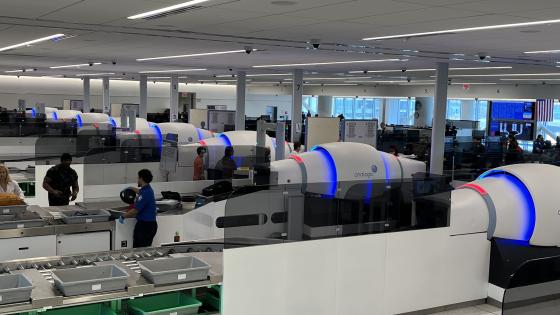
More than 560 Analogic CT scanners are now used at over 120 airports, including here at New York/LaGuardia
The roll-out
Verified Traveller is fully in place at: Calgary (Domestic C), Edmonton, Montréal-Trudeau, Toronto Pearson (T1 domestic Level 3 and T3 domestic), Vancouver (domestic north) and Winnipeg James Armstrong Richardson airports.
Verified Traveller (Transborder) is in place at Montréal-Trudeau T1 and Toronto-Pearson T3 only. Verified Traveller Front-of-the-line is available for travellers using various Canadian airports’ domestic, international and transborder flights.
These are: Billy Bishop Toronto City (domestic and transborder) Calgary (Concourses A, D and E transborder), Edmonton (transborder), Greater Moncton Roméo Leblanc, Kelowna, Québec City Jean Lesage, Regina, Saskatoon, St John’s, Toronto Pearson (T1 and T3 international), Vancouver, Victoria and Winnipeg James Armstrong Richardson (transborder).
Pilot schemes for the different elements of Verified Traveller are also currently in operation at Ottawa and Halifax Stanfield. At Ottawa and Halifax, Verified Traveller is available between certain hours for domestic and international travellers.
The front-of-line element is in pilot operation on domestic and international services at Ottawa from 0800–1430hrs and 1830–2300hrs, and at Halifax from 0330-0630hrs, 1030–1430hrs and 1830–2330hrs.
CT scanners
Global airports of all sizes are increasingly deploying 3-D scanners using computed tomography (CT) imaging and reconstruction technology.
Widely used in the medical sector, CT scanners take hundreds of views of an object at slightly different angles and reconstruct the raw data into volumetric images providing more precise measurements to enable more accurate judgements.
As the US Transportation Security Administration (TSA) recently explained: “CT scanners apply sophisticated algorithms and create 3D rotatable images to help operators detect explosives and prohibited items. TSA officers can then view and rotate the image on three axes to analyse and identify any threat items that may be in a passenger’s carry-on baggage. Similar to what is used to scan checked baggage, this equipment is sized to fit the checkpoint environment."
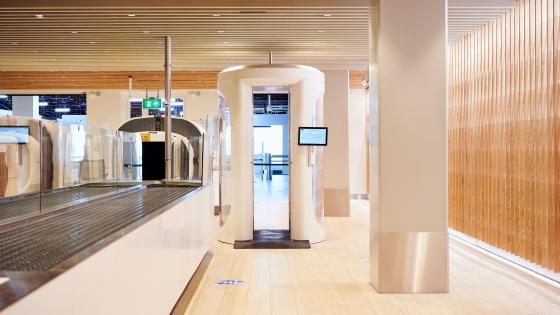
Smiths Detection CT scanning equipment at Schiphol
Amsterdam Schiphol in the Netherlands introduced Smiths Detection CT scanning equipment in May 2021. At the time, Hedzer Komduur, deputy director of safety, security and environment at Royal Schiphol Group, described CT scanners as “good news”, as their deployment means passengers are no longer required to take their liquids and electronics from their bags.
“It’s also good for security staff,” Komduur added. “The CT scan enables them to check baggage on their screen in 3D and even rotate it 360°.”
Global usage
CT scanner deployments are undoubtedly on the rise. In 2019 TSA purchased 300 CT checkpoint systems for airports across the US through the AT/CT programme. The agency then placed a $198m award in August 2021 for mid-size systems and two awards for a combined $781.2m in March 2022 for ‘base’ and ‘full’-size scanners.
In April 2023 three further orders for a combined total value of up to $1.3bn were placed for 426 base-size units from Analogic Corporation, 359 mid-size units from IDSS Holdings and 429 full-size units from Smiths Detection.
By April 2023, the Transportation Security Administration (TSA) says, there were more than 600 CT units in operation at TSA checkpoints across the United States at large, medium and small airports. Installations continue.
Many other airports worldwide are introducing CT scanners, or plan to. London City was the first major UK airport with the capability, deploying Leidos scanners in April 2023. A month later, Munich introduced five CT scanners in Terminals 1 and 2. The German airport is investing €45m to equip all checkpoints with the technology, with the switchover due for completion in 2026.
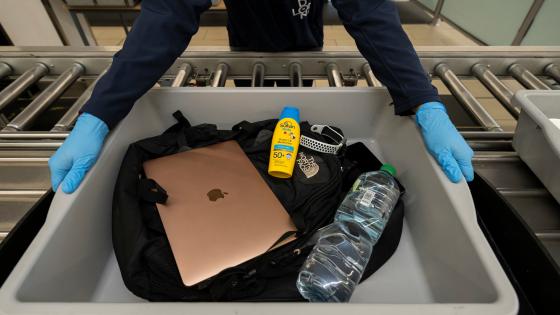
CT technology means passengers can leave approved liquids and electronics in their bags
Elsewhere in Europe, Dublin introduced six CT scanners for summer 2023 in its Terminal 2, with a complete changeover planned by Q1 2024, with Terminal 1 following thereafter. In 2022 Rome/Leonardo da Vinci began using CT technology and Stockholm/Arlanda announced an agreement with Nuctech to install 3-D scanners in Terminal 5.
The Australian Government, meanwhile, has set an end-of-2025 deadline for the country’s airports to introduce CT technology. Scanners are progressively being introduced at Australian airports.
In September 2023 emaratech – part of the Investment Corporate of Dubai, an online technology solutions and consulting firm – announced that its 3D ‘smart scanner’ for Dubai International Airport will be introduced at the end of 2023 or early next year, reported Gulf News.
Providers of 3D scanning equipment include Smiths Detection with its HI-SCAN 6040 CTiX and Analogic Corporation with its ConneCT. Airports International spoke with both Smiths and Analogic about their products.
Both companies’ products have been deployed extensively. Smiths Detection announced the sale of its 1,000th HI-SCAN 6040 CTiX in September 2023. Analogic told Airports International that over 560 examples of the ConneCT are now used at more than 120 airports worldwide, including Atlanta, New York/Newark, New York/LaGuardia, Washington/Dulles, Helsinki and Doha. Deployments are “expanding rapidly”, it added.
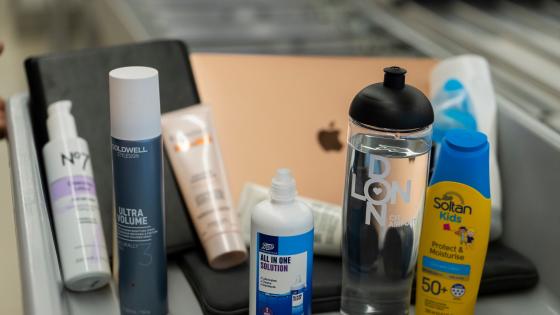
Passengers not having to remove liquids from their bags will improve efficiency
HI-SCAN
Dr Philo Daniel, global director aviation and urban security at Smiths Detection, said the company’s HI-SCAN 6040 CTiX combines “the highest level of detection capability with automatic explosives detection and object recognition to be able to combat evolving threats”.
Dr Daniel commented: “It is the world’s most sold checkpoint CT scanner. Aviation security regulators around the world are increasingly mandating deadlines to install CT X-ray scanners, so the numbers of CTiX sold are ever increasing.”
She said: “The HI-SCAN 6040 CTiX offers easy integration into existing Smiths Detection and third-party checkpoints. It also offers the lowest power consumption in its class, allowing energy savings of up to 20%. Offering superior image quality and the fastest belt speed, it also helps move security lines quicker.”
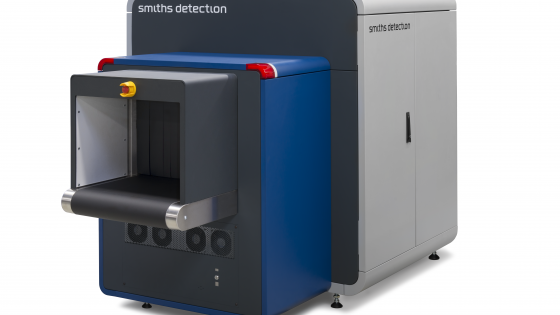
The HI-SCAN 6040 CTiX offers high throughput levels, driven by the highest belt speed in its class (0.2m/s)
Dr Daniel continued: “The CT scanners can be further enhanced with Smiths Detection’s iCMORE automated object recognition software which allows automatic detection of an ever-expanding list of prohibited items, improving security outcomes and efficiency while the latest data security features and controls ensure customer data and assets are well protected from cyber-attacks.
The CTiX scanner is STAC, ENAC and IPMO approved, in addition to holding TSA APSS v6.2 Level 1 certification. The system has ECAC EDS CB C3 approval and featured on the Transport Security Administration’s CPSS QPL and APL (approved and qualified products lists) for base, medium and large configuration CT checkpoint screening systems.
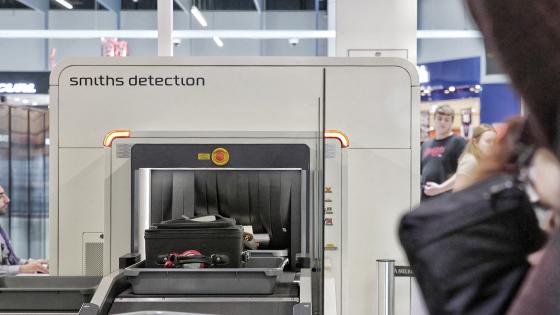
To date, more than 1,000 HI-SCAN 6040 CTiX scanners have been sold
ConneCT
Analogic described ConneCT to Airports International as a “next-generation aviation security offering designed from the ground up to address the requirements of airports worldwide”.
A statement said: “The ECAC and US TSA certified system delivers superior automated threat detection and improved passenger throughput compared to legacy checkpoint X-ray scanners, combining CT 3-D imaging with advanced explosive threat and prohibited item detection software.”
Analogic continued: “The technology allows airports and regulators to permit passengers to leave approved liquids and electronics in their bags at the screening checkpoints, reducing the need for passengers to divest items and increasing passenger throughput.”
It added: “The ConneCT’s energy efficiency and ‘jet engine’ design help airports meet tomorrow’s needs. The ConneCT features a one-of-a-kind innovative truck bearing mechanical design to improve system reliability and lower total cost of ownership, an interoperable network architecture that supports remote image analysis and system monitoring, and is open architecture ready for third-party algorithms.
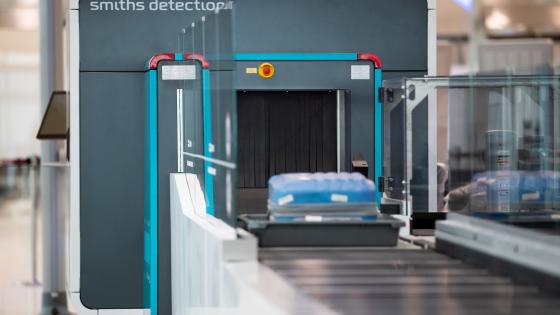
In April 2023 the US TSA ordered 429 full-size CT scanners
Image quality
Analogic said the technology provides “several important benefits, especially in comparison with the 2D X-ray technology that most airport security scanners use today”.
The company said: “The ConneCT’s superior image quality allows for automated detection of threats and prohibited items. CT scanners generate a full 3-D image of the items being scanned which makes it far easier for security operators to determine whether an item in a bag is a potential threat.
“This not only improves airport security, it also reduces costly and time-consuming hand searches – which in turn improves passenger throughput and experience, and gets travellers to their gates faster.”
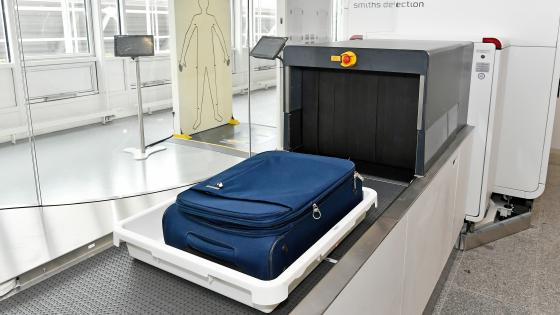
Munich Airport has deployed five CT scanners
Analogic added: “CT scanners also generate more high-quality data on the shape and material composition of the items being inspected. This is critical because it means that CT scanners can take full advantage of artificial intelligence-based threat detection algorithms that Analogic and others are developing.
“These AI-powered algorithms hold the promise to further improve security and passenger experience because they can detect potential threats and prohibited items with improved operator productivity.”
Enhanced productivity
Dr Daniel from Smiths Detection said: “With CT X-ray technology, you can take passenger checkpoint screening to a whole new level, delivering the highest standards of security and meeting the demands for increased productivity and lower operating costs.
She added: “When it comes to the airport passenger journey, the security screening process is typically seen as one of the busiest points. Having to separate belongings into trays, and taking electronics and liquids out of bags, queues tend to build.”
Dr Daniel continued: “The HI-SCAN 6040 CTiX produces high-resolution volumetric 3-D images for quicker and deeper baggage assessment and automatic explosive detection with low false-alarm rates. CT scanners enable security operators to inspect baggage from every angle.”
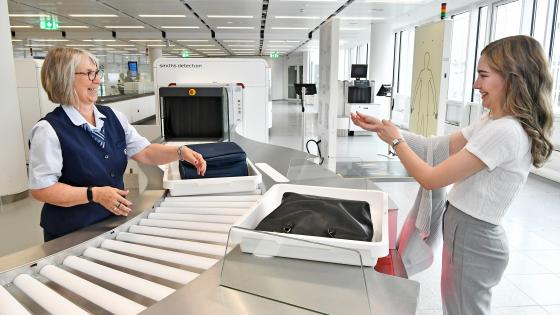
Munich plans to complete its switchover to CT scanners in 2026
He noted the growing adoption of this technology by airports will “drastically” cut queuing times and create “a more frictionless experience at the checkpoint”.
According to Dr Daniel, the HI-SCAN 6040 CTiX “has been shown to reduce time spent at security by up to 50%”. At Milan Linate Airport, he said, 90% of passengers passed through security in less than five minutes.
She claimed the HI-SCAN 6040 CTiX offers “the lowest energy consumption of its type, which not only helps customers achieve their sustainability goals but helps to reduce noise and heat emitting from the system – resulting in a calmer security screening experience and a low cost of ownership”.
“The state-of-the-art security scanner ultimately leads to greater safety outcomes, more efficient operations, and improved passenger satisfaction,” Dr Daniel concluded.
Further reading: Perimeter security
Although perimeter breaches are relatively rare, they are inevitably consequential – halting operations, delaying flights, even threatening traveller safety. and costing airports millions of dollars in fines, damages and lost revenues.
According to Genetec, “strengthening perimeter security has become a mission-critical task for today’s airports”. The company says using a single platform to manage perimeter security enables incidents to be managed more effectively.
Genetec has a product called Security Center Restricted Security Area Surveillance that it says “brings all your perimeter protection sensors into one intuitive monitoring solution”. The system can be set up in different ways “to protect sensitive zones and automate threat detection” including creating buffer zones around restricted areas to pre-qualify potential threats. There are custom settings and a feature called Fusion pulls data from various sensors to determine threats and actively monitor the situation on an intuitive map.
Another supplier, Axis Communications, believes “effective intrusion protection requires depth”. It offers a suite of surveillance systems it says “provides highly reliable intrusion protection with24/7 remote monitoring capabilities”.
These systems detect, verify and identify potential intruders and distinguish actual intrusion risks from causes of false alarms such as wildlife. Axis offers a suite of systems including PTZ (pan, tilt and zoom), thermal, box, bullet and dome cameras, radars, vehicle access control and body-worn solutions. Its systems can be integrated with network speakers; pre-recorded or live messaging can be used. Deployments include Rio de Janeiro/Galeão–Antonio Carlos Jobim International and Sharjah airports.
